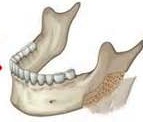Changing the mandibular jaw angle can be one of the most challenging of all aesthetic facial skeletal surgeries. It is a tight space to work in from an intraoral approach and visualization is almost always suboptimal. Loupe magnification and a head light would be considered critical in any type of jaw angle surgery particularly that of bone reshaping/reduction.

In the July 2015 issue of the Annals of Plastic Surgery, the article entitled ‘Endoscopic-Assisted Intraoral Three-Dimensional Reduction Mandibuloplasty’ was published. In this paper the authors describe a jaw angle reduction technique done in over 100 patients over a three year period. This was a one-stage long-curved ostectomy combined with a splitting corticectomy done through an intraoral approach with the assistance of an endoscope. The one-stage long-curved ostectomy and corticectomy were performed using an oscillating saw with angles of various degrees and length under direct vision. Their results showed good three-dimensional changes to the jaw angle with lower facial width reduction. Patient satisfaction was high. These changes, as would be expected, increased the height of the gonial angle and the mandibular plane angle as well. No major complications occurred from bone fracture to facial nerve injury.
The value of the endoscope is not clear from reading this article but what is most evident is that effective reduction of the jaw angle requires a combination of bony techniques. The actual jaw angle must be removed and the bone thinned by removing the outer bony cortex. This can make the face look thinner from the front view and have a smooth line from the side view. The jaw angle will get higher and there is the risk of loss of some soft tissue support so over resection of bone should be avoided.
Dr. Barry Eppley
Indianapolis, Indiana


